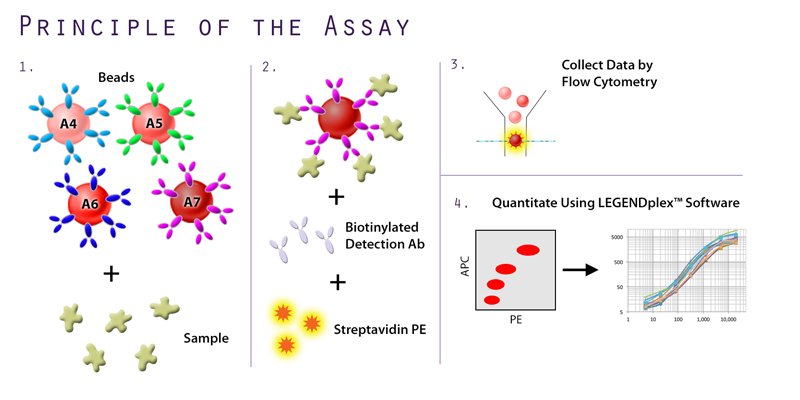BioLegend's LEGENDplex™ kits are provided as predefined panels, ranging from 3 to 14 specificities, or customers can mix and match any subset within each predefined panel using our Mix and Match system. If you would like to combine specificities across different predefined panels, i.e., Human Cytokine and Human Chemokine, please visit our custom panels tab at the top of this page.
Each kit provides sufficient reagents for at least 100 tests. The assay can be performed in a 96-well filter plate, allowing you to run 40 samples plus 8 standard curve titrations in duplicate, or they can be performed in FACS tubes, where duplicate titrations may not be necessary.
For analysis of LEGENDplex™ assays, BioLegend offers free of charge data analysis software. Please click on the software tab above to learn more about the program options and to request account access. |
